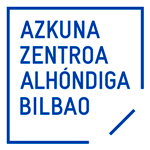
Madrid, 1975. BA in Stage Direction and Dramaturgy at the Real Escuela Superior de Arte Dramático, in 2001 she founded Nao d´amores, a collective of professionals originating from classical theatre, puppetry and early music, that develops research and training work for the staging of medieval and renaissance theatre. She has inaugurated fourteen shows with that company, which, from a contemporary perspective, is a milestone in the recovery of the pre-baroque theatre.
As an independent director she has done staging for very diverse texts, worth special mention are the works for public institutions such as: RTVE (Spanish Radio and Television by its Spanish acronym), Zarzuela Theatre, National Drama Centre, and National Classical Theatre Company. She has been a guest speaker in multiple seminars and congresses, giving training workshops in different countries of Europe and America. She has received important awards over her long professional career, she is a member of the Royal Academy of Art History of San Quirce, and is on her second residence in stay at the Spanish Royal Academy in Rome.
Share:
Italy and Spain are privileged places for the study of theatrical events, or parateatrales, linked to popular tradition. Here the boundary between ritual and theatrical fades away to generate passionate staging expressions. A path is opened, allowing us to enter the most primitive theatrics, which brings us to understand the meaning of performing arts as a rite that invokes the supernatural, it comes to life in a vital meeting space for society with itself. Pagan and Christian rituals that become a great celebration, inevitably now for tourists, exponent of a lost world, or perhaps dreamt of, that takes us to the ancestral meaning of the performing arts. And in this panorama of fusion and confusion, emerges the puppet as a grand magical element, totemic, to be at the forefront of a theatre unregulated by realistic rigid paradigms not in the least concerned about anachronisms, as art that accumulates all the possible improbabilities. A drama instrument that condenses the critical, satirical, and popular sense in the best sense of the word, that our contemporary stage vastly needs.
If anything can be clarified by the study of theatrical events, or parateatrales, generated in the area of popular tradition, it is that beyond proud national symbols and apocalyptic messages around national identity, we are surprisingly close to each other. In the case of countries with historic and geographical ties as close as Italy and Spain, the traditions could even be mistaken for the other. So, in my search I couldn’t go towards attributing ownership, national origins to the shared theatrical elements, but reflect them, comment on them, admire them and understand that as spaces of co-existence they reflect a common way of understanding the world to which we belong.
That is the perspective I arrived at Rome with in the month of January, with a tight work agenda that began with a first theoretical approach to the starting material, to immediately tackle the phase called field work, that would take me to different parts of Italy. In the month of February, I had the privilege of being able to travel to Sardinia to document five extraordinary traditional carnivals: Su Battileddu (Lula), Mamuthones and Issohadores (Mamoiada), Maschera a Lenzolu (Aidomaggiore), Sa Sartiglia (Oristano) and Don Conte (Ovodda).
It was just the beginning of a passionate program of trips that would allow me to document the prevalence of traditional theatrical elements in popular rituality and events related to puppets. But then, just in the moment when I was returning to Rome with the documentation under my arm, the anti-COVID-19 measures came into swing and the practical plan of the work was frustrated. The pandemic obliged me to reduce the project and centre on the detailed study of bibliographic material, such as documents and recordings in digital format.
Afterwards, throughout the months of July and August 2021, once the confinement perimeter was lifted, I could go back to the road, parking the part of the project that was linked to theatre anthropology, to concentrate on the study of the prevalence of the different variants of traditional puppetry in Italy. From Naples to Turin, and from Sicily to the boarder of Slovenia, I was received with enormous generosity by puppeteers and families of art, and in long hours of conversation in their theatres and workshops, they shared with me details of a historic trade, that in that country, is conserved with boundless energy.
Returning home, a new phase was beginning, kneading all of those materials that returned with me in my backpack, to build an expository show of the documented and lived experiences. Finally, in May of 2021, after a long and difficult process of rehearsals, the artistic team of Nao d´amores will be able to inaugurate in Spain and in the Spanish Royal Academy in Rome, Andanzas de don Cristóbal Polichinela.
